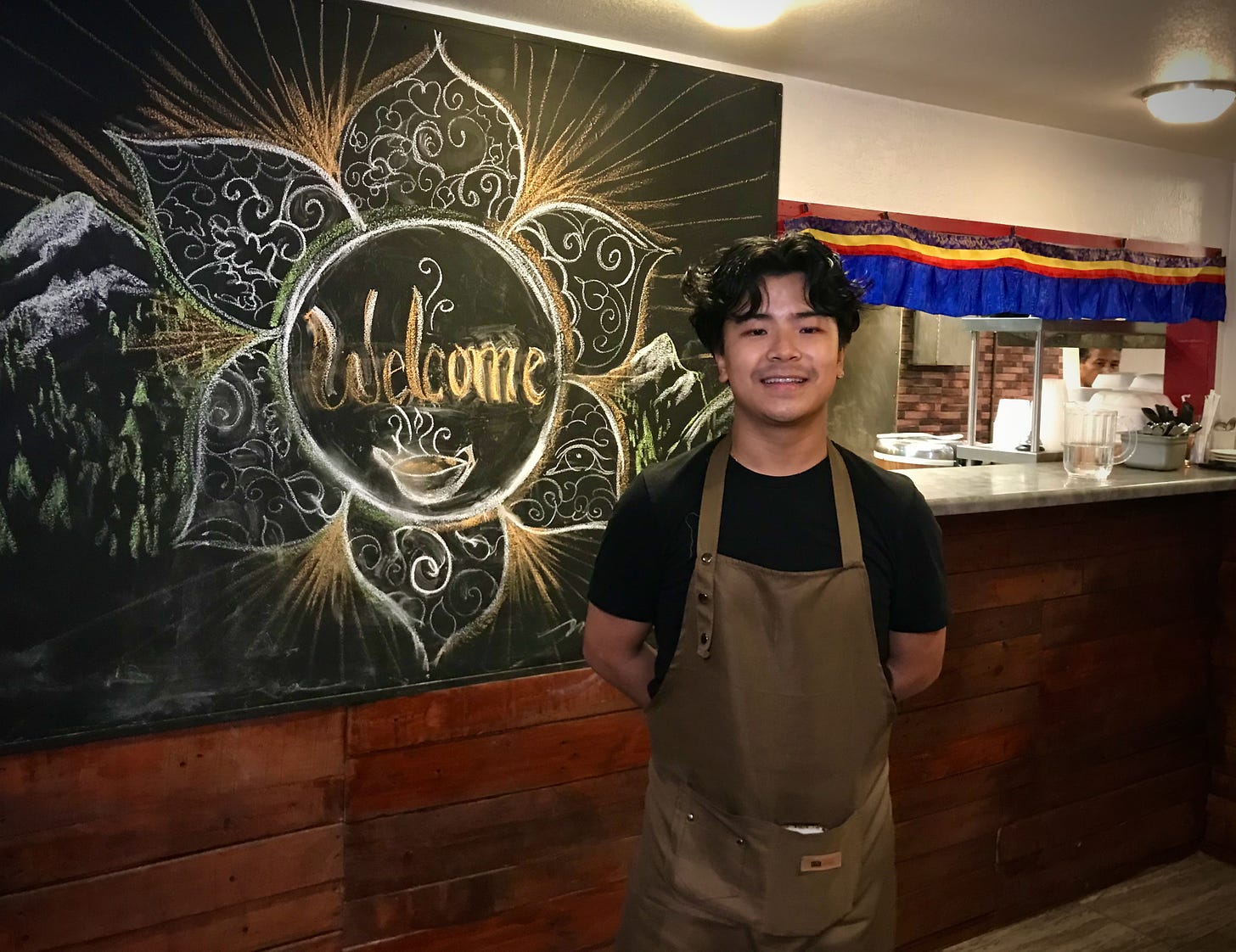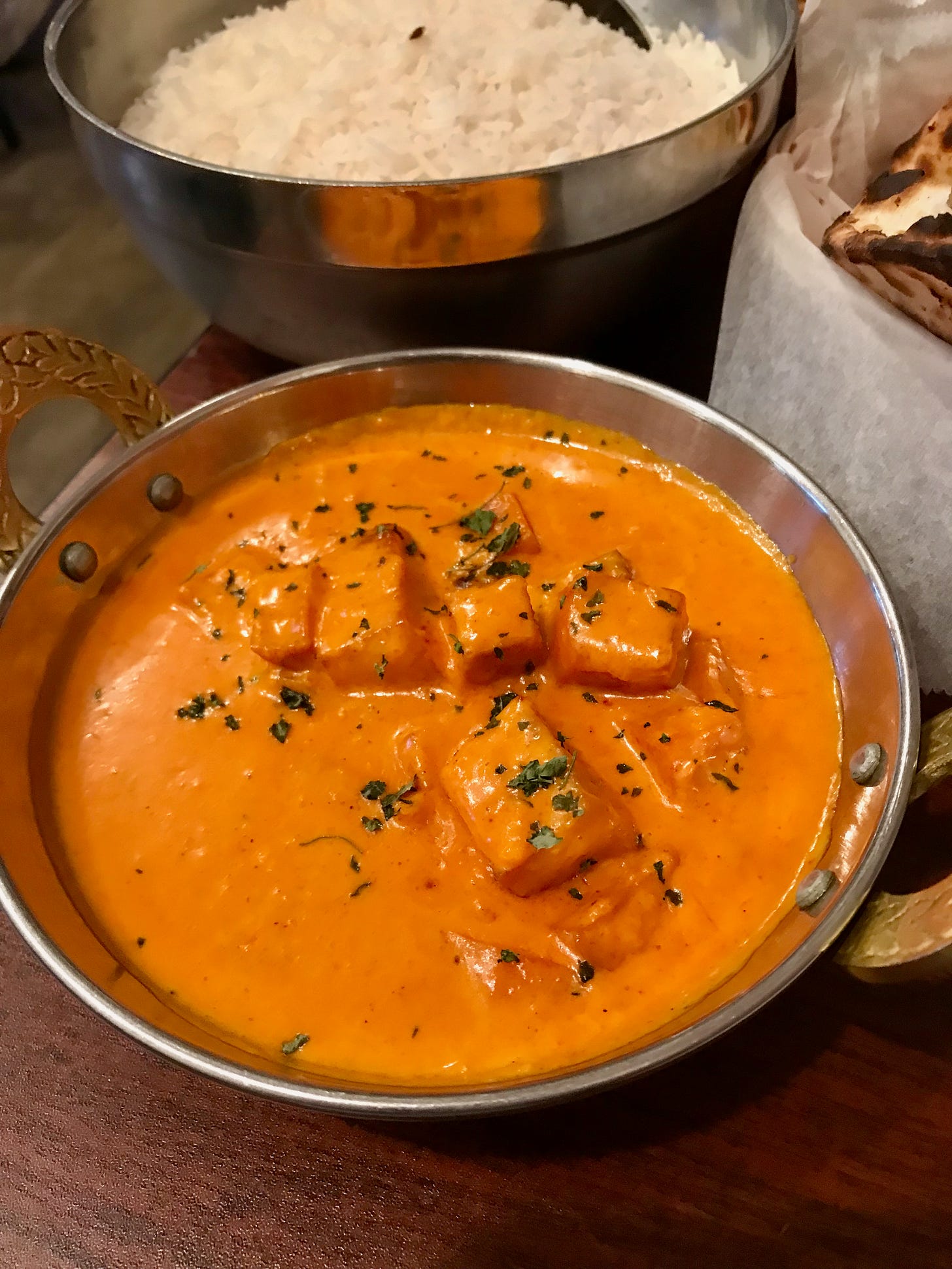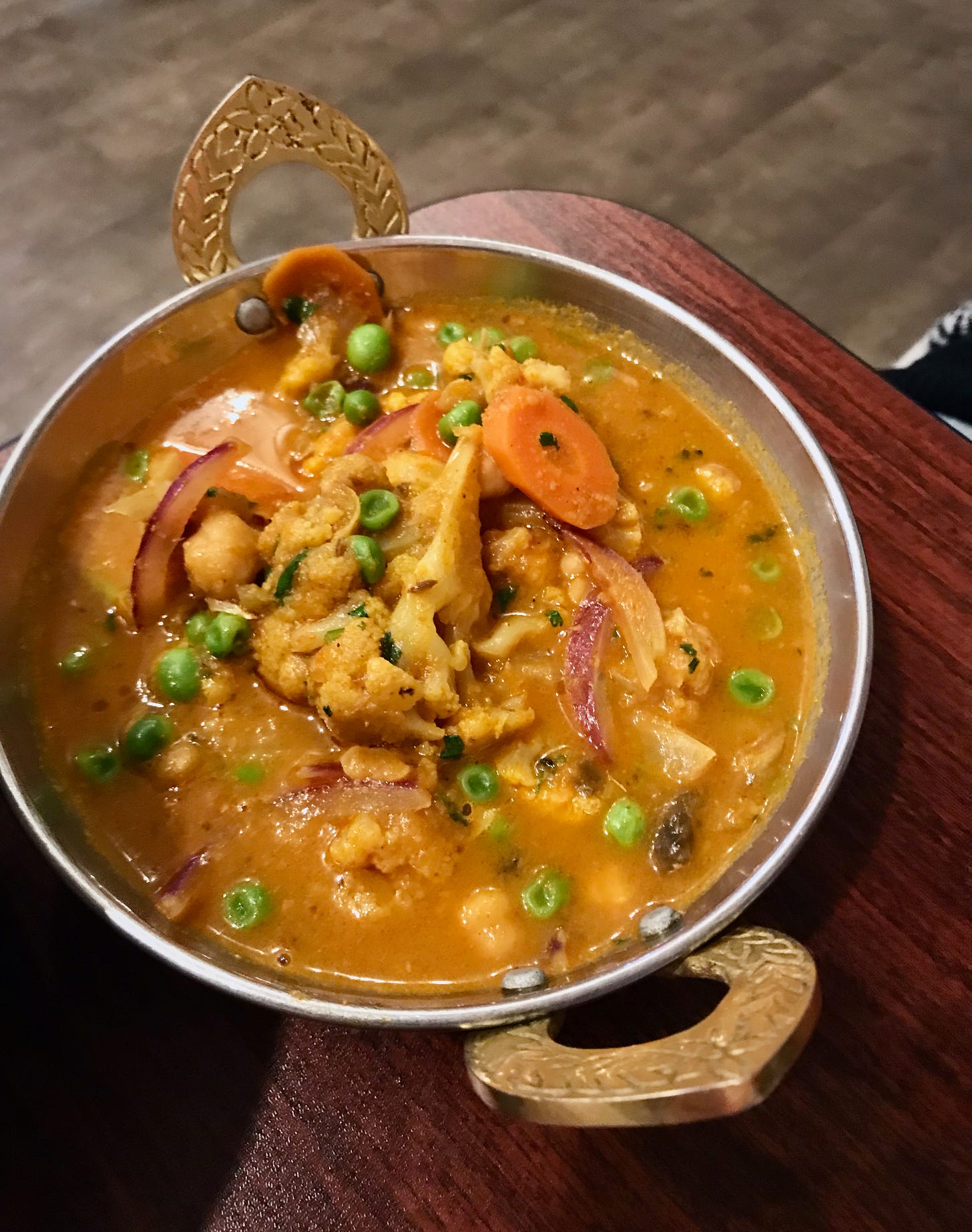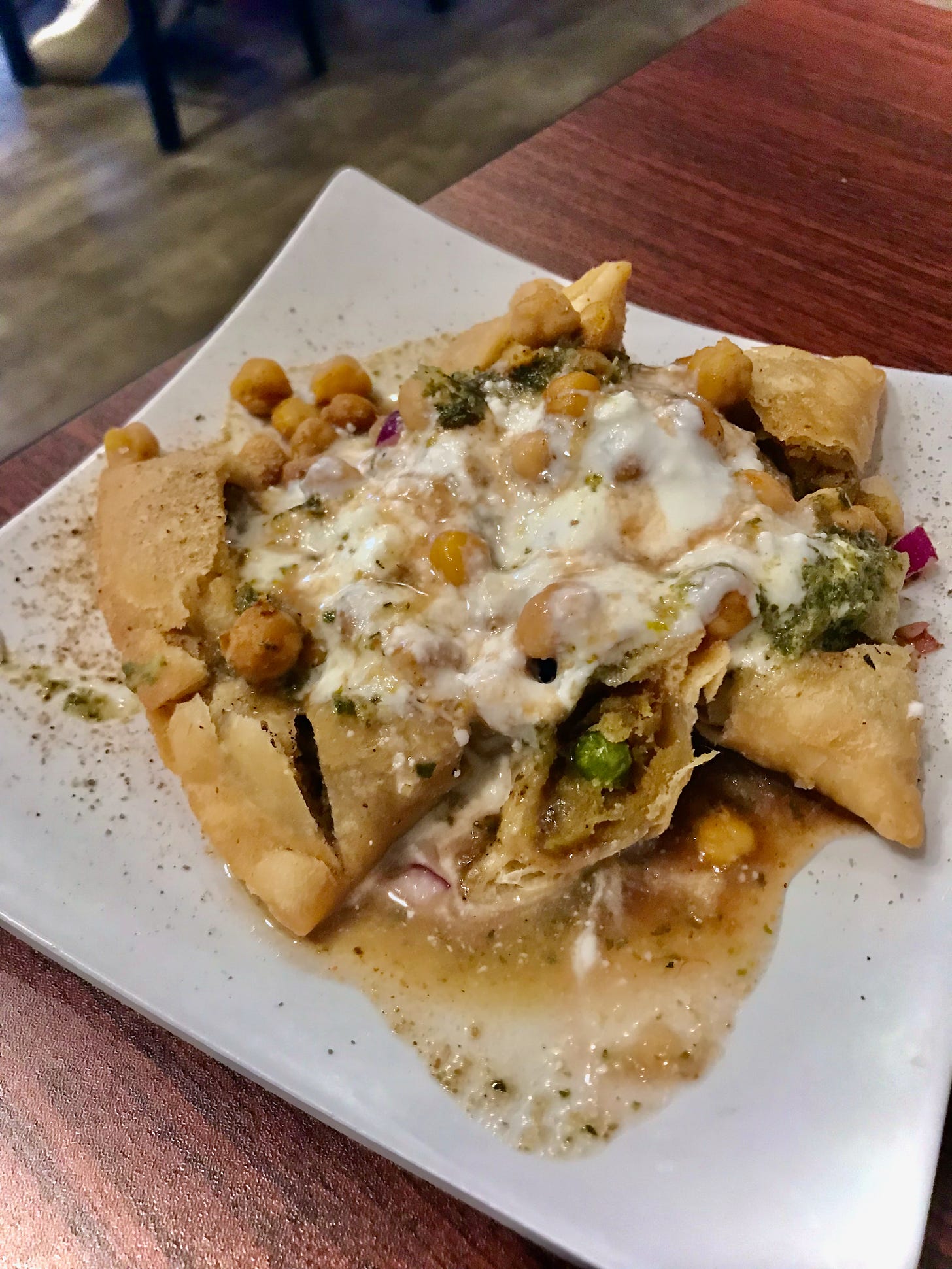A Manitou Springs Sherpa 🍽
Norbu’s Himalayan Hut highlights a young Kathmandu native's take on Nepali cuisine

I was taking a good friend who lives in Manitou Springs to dinner and she’s vegetarian. Norbu’s Himalayan Hut was the natural option. I hadn’t been to the space since mid 2019 when it was Babu’s Kitchen & Bar, which I was wasn’t overly fond of on first impression.
Jigme Norbu Sherpa took over in May 2022 and rebranded as Norbu’s in November of that year. He knew Babu’s had established a spotty reputation for consistency, so as a new business owner — at age 27 — he completely overhauled the place and inserted his own menu, made from his own recipes. He’d prior learned to cook at his mom’s restaurant, Indian Oven, located in Denver’s University Hills neighborhood. He started as a busser and server as a teenager, but jumped back to the kitchen “because one of the cooks at her spot was messing it up so bad I had to learn myself,” he says. “I had to gain my mom’s trust that I could cook. It took her a while, but we got there, and for two years I did all the cooking.”
Jigme was born and raised in Kathmandu through age 16, when his family moved to Colorado. His father still operates a trekking company in Nepal, and still takes people to Mount Everest’s base camp, though Jigme says his dad doesn’t summit anymore. Jigme got to see the mountain up close on a two-week hike with his father and a group of French people when he was 13. But his own path later lead him to a business management degree at Denver’s Metropolitan State University.
Shortly after graduating, his mom strongly encouraged him to give his own business a shot; they’d heard from Babu’s wife (who owned a gift shop in Boulder) that Babu was desiring to sell. Jigme says he’d wanted to take a break after school and ponder his options, and even after scouting Babu’s location he had mixed feelings about the feast-or-famine nature of Manitou Springs’ tourist-packed summers and lean winters (where he’d have to court locals).
“I said we’ll just try and do our best, and let everything handle itself,” he says.
Unlike his mom’s spot, which hosts daily lunch and dinner buffets, Jigme opted to eschew buffet service altogether and focus on tighter quality control. (Like all of us, he knows the tendency for quality to suffer when quantity demands more attention.) He designed a simple menu “that’s easy for customers to understand — I don’t feel it’s necessary to overwhelm them with so many options.” Roughly a dozen vegetarian selections compose half of the entrée menu, and a list of proteins (chicken, lamb, salmon, shrimp) are at the top of the other half with a list of sauce options underneath: makhani, korma, saag, vindaloo, biryani, etc.
He says his recipes he’s developed utilize more spices than his mom tended to cook with, as she catered to Western palates. And he says the curry he makes for us today is exactly how he’d make it for himself at home. (Speaking of home, one item notably absent from Nepal is momo, and Jigme says he’d love to put it on his menu, but it’s labor intensive, so he’s only been able to special it so far during slower winter weeks. Customers do request it, he says.)
We do try his vegetable curry, which greets garlic naan and basmati rice favorably. There’s an interesting acidity and piquant element to the soupy sauce and the vegetables are all stewed soft and seasoning-soaked, from cauliflower florets to carrot wheels, red onion slivers and dimpled peas. The aggressively bright orange sweet potato masala hosts large cubes of the sugary spuds and a velvety creamy masala sauce that’s a textural treat laced with familiar Indian spices.
I recommend starting with the samosa chaat (popular street food item) as we do: a pair of empanada-like, fried puff pastry triangles stuffed with potatoes and onions. Atop that goes a generous yogurt dollop, mint chutney and tamarind sauce for contrasting zing and a rain of chickpeas for added starchiness. It may all look like a hot mess once you cut into and start mixing it as you take bites, but it’s a delicious hot mess that like the best of vegetarian fare, doesn’t for a moment leave you thinking about or desiring a meat component. I’ll have to return to Norbu’s sometime soon to work over that section of the menu over, but this night, I leave more than content by our choices.
And for dessert …
It’s hard to leave Manitou Springs without indulging your sugar cravings at Colorado Custard Company. I satisfy mine with a peanut butter-chocolate Avalanche (your choice of topping blended into a base vanilla or chocolate custard). Yum and yum.
I’m not sure if anyone’s still not up to speed on the difference between custard and regular ice cream, but if that’s the case, here’s how I explained it back in 2011 when I last wrote up CCC for the Indy:
“…Custard is made with egg yolks; packed at 20 degrees above zero, not 10 below; and whipped with about 20 percent less air. All this makes for a denser, creamier mouth-feel and arguably more potential for flavor perception. With the same 14 percent butterfat as premium ice cream, it ain't claimin' to be healthy — just damn delicious.”
On that note of health, the long time irony has been that CCC is owned by legendary local ascent runner Matt Carpenter. (Probably the only guy who really burns off those custard calories daily with his runs.) If you’re newer to town and don’t know about Carpenter by now, click that link above and consider this (pulled from his website):
“Matt is the current course record holder of the Pikes Peak Ascent and Marathon with times of 2:01:06 and 3:16:39. In 2001 he became the first person to win the Ascent and Marathon on back to back days. He repeated this feat in 2007. He is also the record holder of the fastest times for a flat marathon held at altitude - 2:52:57 at 14,350' and 3:22:25 at 17,060'. In 2004, at his first 50 mile race, he broke the course record by over 40 minutes. At the 2005 Leadville Trail 100 he lowered the course record by over 90 minutes to 15:42:59.”
Yeah … that’s your custard peddler!







Well done as usual. Good writing skills on display.